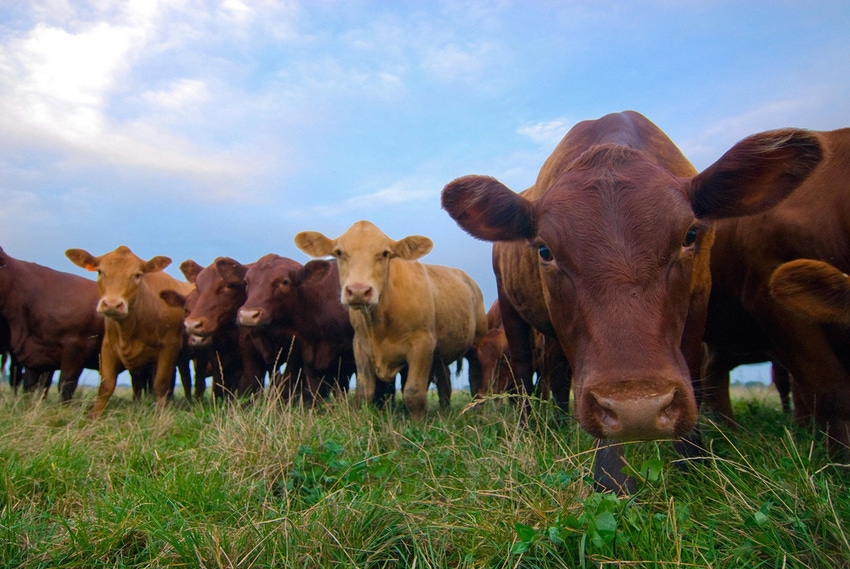July 15, 2015

On Monday, I wrote a blog post that urged beef producers to be prepared to explain GMOs to consumers, as it’s becoming a common concern that GMO corn is being fed to livestock. As a result, when the corn industry is being attacked, so too, are beef producers.
In case you missed it, read: Are beef producers prepared to defend GMOs?
In response to my blog, Daren Williams, NCBA’s executive director of communications, emailed me a few resources for cattlemen to utilize to brush up on the facts about GMOs and livestock production. From those resources, here are five facts about GMOs beef producers should relay to consumers:
1. GMO foods taste, look and offer the same nutritional value as non-GMO foods.
“For consumers, the important message is that GMO-derived foods and food ingredients taste, look and provide the same nutritional value as non-GMO foods. This has been well documented by the agency responsible for the safety of food: the U.S. Food and Drug Administration (FDA),” says Ruth MacDonald, professor and chair of Food Science and Human Nutrition, Iowa State University.
READ: GMO feeds are safe for animals, meat safe for humans

Photo Credit: USDA
MacDonald adds, “GMO products have been in the U.S. food supply since 1996 – hence we have years of practice that have shown no negative impact on animal or human health. Farm animals, the most carefully monitored animals on the planet, have been raised on GMO corn and soybeans over several generations and there is no evidence of negative effects on growth, reproduction or disease. And there has been no documented case of human illness or allergen associated with GMO foods.”
3. All foods and living materials, not just GMO foods, have DNA.
MacDonald explains, “A concern that I have heard raised by consumers is that GMO technology puts foreign DNA into food and that DNA will affect their body when eaten. My first response to this is to remind that all food has DNA – any living material, plant and animal, contains DNA. We eat carrot DNA and strawberry DNA and don’t worry that we will grow carrot noses or strawberry hair, so why would it be that GMO DNA is somehow handled differently? It is not – the DNA in food is broken down to elemental parts through the digestive process and cannot be transferred from the intestine to cells within the body. This is true for human digestion as well as animals. There is no evidence that DNA from food is taken up into the animal – so meat from animals fed GMO grain will not be different from meat from animals fed non-GMO grain – and it would be virtually impossible to distinguish these meat products even with the most sophisticated technologies.”
4. GMOs are not a new technology; farmers have been developing new crops for 10,000 years.
According to factsaboutbeef.com, “For 10,000 years, farmers have intentionally changed the genetic makeup of all the crops they grow to produce hardier crops that taste better, resist disease and are easier to grow, all while taking up less land. As selective breeding and crossbreeding of crops evolved, more U.S. soybean crops (94% in 2014, the latest data available) and U.S. corn crops (93% in 2014, the latest data available) were grown from GMO seed. Today, eight crops – corn, soybeans, cotton, canola, alfalfa, sugar beets, papaya and squash – are available from biotech seeds for commercial use in the U.S.”
READ: Safety first: The role of GMOs in livestock feed
5. If consumers want beef from cattle not feed GMOs, look to organic.
Fortunately, consumers have many options in the meat case and can choose the best beef that fits their needs. For folks wanting to avoid GMOs, factsaboutbeef.com says, “When shopping, look for beef labeled USDA Organic. The USDA National Organic Program standards prohibit the use of feeding genetically modified crops, although hundreds of studies have confirmed there are no adverse effects on the animal or the resulting meat from cattle fed GMO crops including corn and soybeans, so regardless of whether you choose organic, natural or conventional beef, all beef is safe to consume, delicious and nutritious.”
Have you been asked about the feed you offer your cattle? How have you handled it? Do you think GMOs need to be on a food label? Why or why not? Share your thoughts in the comments section below
The opinions of Amanda Radke are not necessarily those of beefmagazine.com or Penton Agriculture.
You might also like:
Picture perfect summer grazing scenes from readers
How to prevent & treat pinkeye in cattle
60 stunning photos that showcase ranch work ethics
7 tools to win the war against cattle flies
7 U.S. cattle operations that top the charts for their stewardship efforts
You May Also Like



